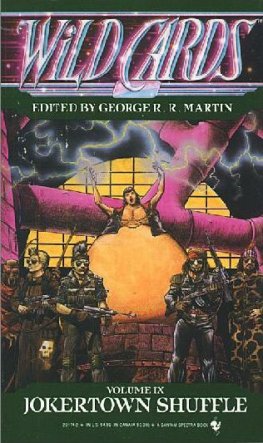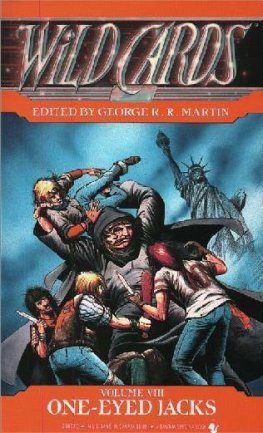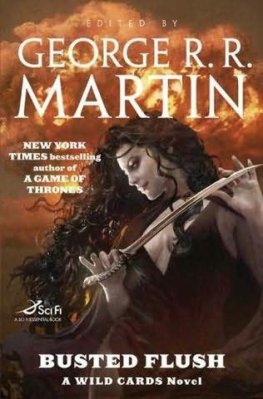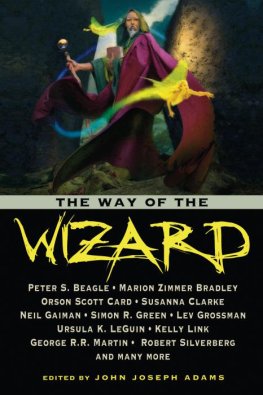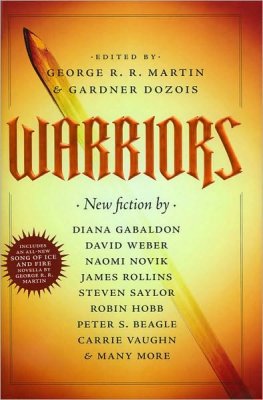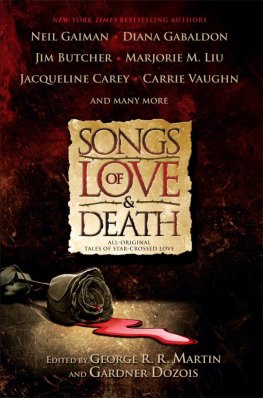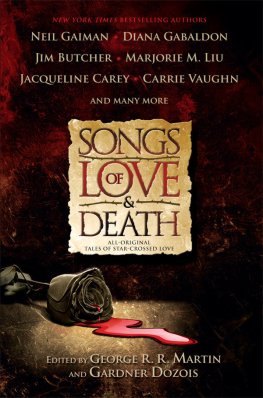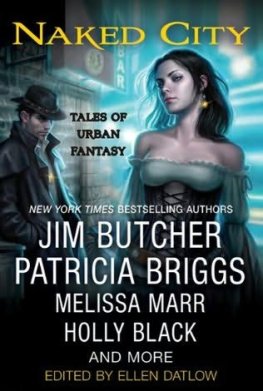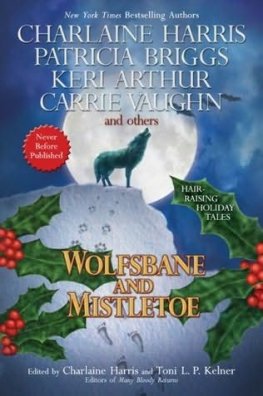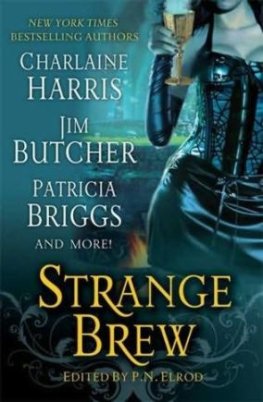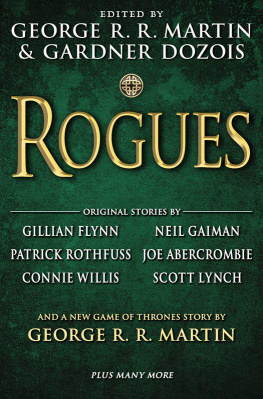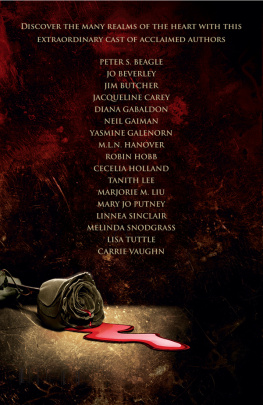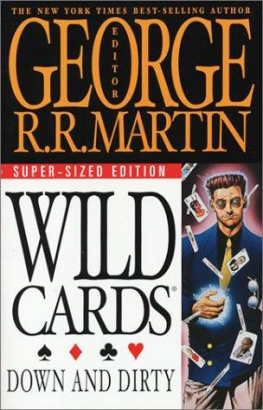Down These Strange Streets
An anthology of stories edited by Gardner Dozois and George R R Martin
To our friend Jack Dann,
who has walked down some pretty strange streets himself
Theres a new kid on the shelves in bookstores these days. Most often he can be found back in the science fiction and fantasy section, walking with a certain swagger among the epic fantasies, the space operas, the sword-and-sorcery yarns and cyberpunk dystopias. Sometimes he wanders up front, to hang out with the bestsellers. They call him urban fantasy, and these past few years hes been the hottest subgenre in publishing.
The term urban fantasy isnt new, truth be told. There was another subgenre that went by that name back in the 1980s; it mostly seemed to involve elves playing in folk-rock bands and riding motorcycles through contemporary urban landscapesusually in Minneapolis or Toronto, both of which are very nice towns.
The new urban fantasy may be some kin to that 1980s variety, but if so, the kinship is a distant one, for the new kid is a bastard through and through. He makes his home on streets altogether meaner and dirtier than those his cousin walked, in New York and Chicago and L.A. and nameless cities where blood runs in the gutters and the screams in the night drown out the music. Maybe a few elves are still around, but if so, theyre likely to be hooked on horse or coke or stronger, stranger drugs, or maybe theyre elf hookers being pimped out by a werewolf. Those bloody lycanthropes are everywhere, though its the vampires who really run the town . . . And dont forget the zombies, the ghouls, the demons, the witches and warlocks, the incubi and succubi, and all the other nasty, narsty things that go bump in the night. (And worse, the ones that make no sound at all.)
Try being a cop in a town like that.
Try being a private eye.
The bastard subgenre that is todays urban fantasy is the offspring of two older genres.
Horror is the mother that gave it birth. (And thats horror, if you please, dont give me any of this dark fantasy claptrap, thats just a feeble attempt to pull a cloak of respectability down over the grinning skull of a genre that traces its own roots back to penny dreadfuls and Grand Guignol.) The vampires, werewolves, ghosts, and ghouls that roam the alleys of todays urban fantasy all started out in the horror ghetto originally, given form and voice by Bram Stoker, Edgar Allan Poe, H. P. Lovecraft, and the generations of writers who followed in their twisted, misshapen footsteps.
The father of todays urban fantasy, however, is the mystery story. And not just any old kind of mystery story. The so-called cozy story of detection, where little old ladies puzzle out who killed the curate in the snuggery with no weapon but a lace doily, is not part of its heritage. No, were talking noir here, were talking the strong stuff, raw and dirty. The ancestors of Harry Dresden, Anita Blake, Rachel Morgan, Mercy Thompson, Jayn Heller, and the rest of that hard gang of demon hunters and vampire killers who populate the alleys and byways of urban fantasy can be found in Sam Spade, Lew Archer, Travis McGee, Mike Hammer, and Race Williams . . . and, of course, Philip Marlowe, Raymond Chandlers iconic private eye.
In his classic essay in Atlantic Monthly, The Simple Art of Murder, Chandler wrote:
Down these mean streets a man must go who is not himself mean, who is neither tarnished nor afraid. The detective must be a complete man and a common man and yet an unusual man.
The heroes and heroines of urban fantasy fit Chandlers prescription perfectly . . . though I expect that even Marlowe himself would be surprised at just how unusual some of them can be. But maybe not.
Truth be told, the private eye of Chandler and Hammett and their hard-boiled successors has more in common with the vampires and werewolves of horror fiction than with most real-life private investigations. Whereas their fictional counterparts are solving murders, unraveling plots, and walking through the bad neighborhoods that even the cops dare not enter, the real-life PIs spend their days documenting adultery for sleazy divorce lawyers, dealing with corporate security and industrial espionage, and investigating fraudulent insurance claims. The urban fantasists are only taking the trope one step further. Sam Spade has more in common with Harry Dresden than either of them do with the people youll find listed under Private Investigators in the yellow pages.
Raymond Chandler also wrote:
The private detective of fiction is a fantastic creation who acts and speaks like a real man. He can be completely realistic in every sense but one, that one sense being that in life as we know it such a man would not be a private detective.
The heroes of urban fantasy come out of the hard-boiled mystery, while the villains, monsters, and antagonists have their own roots in classic horror . . . but it is the combination that gives this subgenre its juice. For these are two genres that are at heart antagonistic. Horror fiction is a fiction steeped in darkness and fear, and set in a hostile Lovecraftian universe impossible for men to comprehend, a world where, as Poe suggested, death in the end holds dominion over all. But detective fiction, even the grim, gritty, hard-boiled variety, is all about rationality; the world may be dark, but the detective is a bringer of light, an agent of order, and, yes, justice.
You would think this twain could never meet. But bastards can break all the rules, and thats half their charm. The chains of convention need not apply.
Consider, for example, a case wherein a dead body is found drained of all blood.
If a reader comes upon that scenario in a horror novel, he knows at once that theres a vampire lurking about somewhere. The cops may or may not twig to it, depending on the world the story is set in, but the reader knows the answer: the book says HORROR on the spine.
If a reader comes upon the identical scenario in a mystery novel, though . . . Well, now he knows it is definitely not a vampire, no matter what it looks like. Some psycho killer who thinks hes a vampire is about as far as any realistic mystery novel will go.
In both cases, genre expectations define and shape our reading experience and color the ways in which we will perceive the events of the story.
It is only when the bastard stepchild takes the stage that real uncertainty sets in. Now were dealing with a hybrid form: part fantasy, part mystery. All the conventions must be called into question. Suddenly the puzzle is a puzzle again. Maybe its a vampire, maybe its a psycho, maybe neither, maybe both, maybe something else entirely. Better keep reading to find out.
Better keep reading to find out are the sweetest words any writer can hear.
Of course, todays urban fantasists are by no means the first to cross the classic private eye story with fantasy and horror. Poe himself did it, with those murders in the Rue Morgue. Arthur Conan Doyle confronted Sherlock Holmes with the Hound of the Baskervilles . . . and though, in the end, the hound proves no more supernatural than Lassie, the storys frisson all comes from the possibility that he may be something much darker and more frightening.
And then there is Robert A. Heinlein, the most unlikely protourban fantasist of all . . . but what else is one to make of my favorite Heinlein story, The Unpleasant Profession of Jonathan Hoag, wherein the mousy Hoag hires a husband-and-wife team of private eyes to investigate what it is that he finds under his fingernails when he wakes up every morning. Is it blood, or . . . something else?
(I wont spoil the story by telling you. The Bird is Cruel.)
Thats the great thing about this bastard stepchild. The streets he walks are just as mean as those that Spade and Marlowe walked, but considerably stranger . . . and they can take you most anywhere. As the book that you hold in your hand will show.


